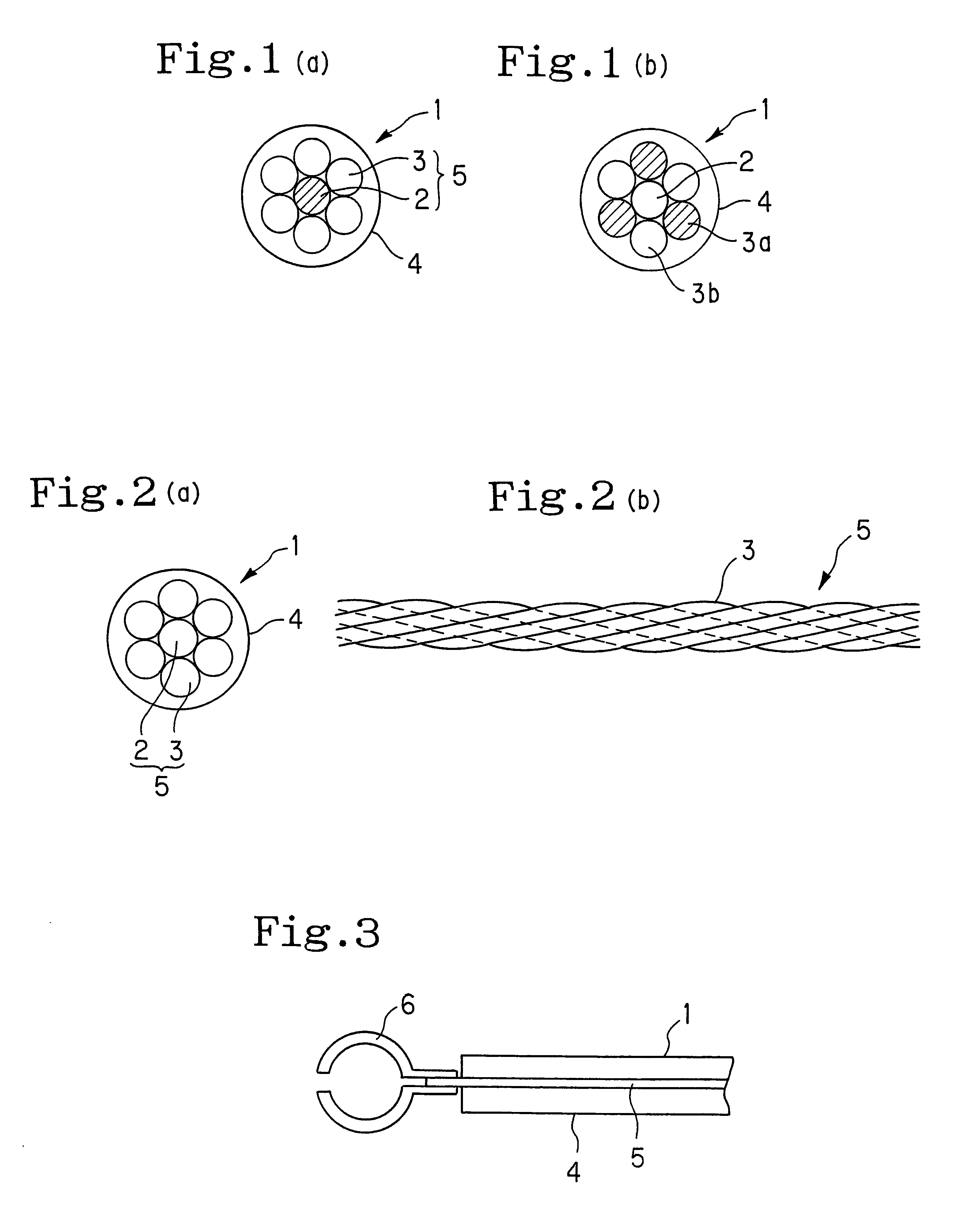Wire conductor for harness
a wire conductor and wire harness technology, applied in the direction of insulated conductors, conductive core details, cables, etc., can solve the problems of insufficient conductivity and insufficient strength of wire conductors composed of annealed copper, and insufficient strength of wire conductors using sn-cu alloys,
- Summary
- Abstract
- Description
- Claims
- Application Information
AI Technical Summary
Problems solved by technology
Method used
Image
Examples
example 1
There was produced a wire conductor 1 for a wiring harness shown in FIG. 1(a), comprising a core wire 2 and six strands 3 twisted around the core wire 2. As the core wire 2, a beryllium copper 25 HT wire of 0.19 mm in diameter containing 1.60% by weight of beryllium was used. As the strands 3 twisted around the core wire 2, annealed copper wires of 0.19 mm in diameter were used. As a covering material 4, a polyvinyl chloride resin was used. The pitches of twisting the strands 3 around the core wire 2 were 30 mm. Incidentally, "beryllium copper 25 HT" refers to the H material of 25 kinds of beryllium copper, which had been subjected to age hardening.
The above wire conductor 1 for a wiring harness was measured for tensile strength and conductivity according to JIS C 3002. The results are shown in Table 1.
example 2
There was produced a wire conductor 1 for a wiring harness shown in FIG. 1(b), in the same manner as in Example 1 except that half of the strands 3 twisted around the core wire 2 were composed of beryllium copper 25 HT, the remaining strands 3 and the core wire 2 were composed of annealed copper, and the strands 3a composed of beryllium copper and the strands 3b composed of annealed copper were alternately arranged around the core wire 2. The wire conductor 1 for a wiring harness was measured for tensile strength and conductivity. The results are shown in Table 1.
PUM
 Login to View More
Login to View More Abstract
Description
Claims
Application Information
 Login to View More
Login to View More - R&D
- Intellectual Property
- Life Sciences
- Materials
- Tech Scout
- Unparalleled Data Quality
- Higher Quality Content
- 60% Fewer Hallucinations
Browse by: Latest US Patents, China's latest patents, Technical Efficacy Thesaurus, Application Domain, Technology Topic, Popular Technical Reports.
© 2025 PatSnap. All rights reserved.Legal|Privacy policy|Modern Slavery Act Transparency Statement|Sitemap|About US| Contact US: help@patsnap.com



